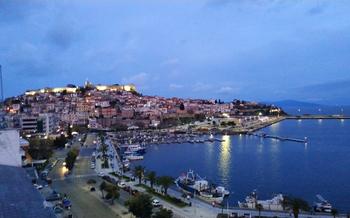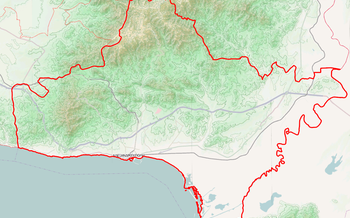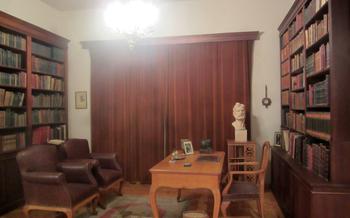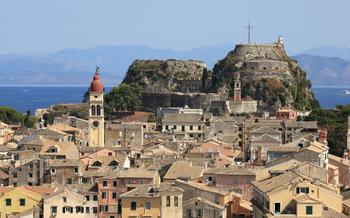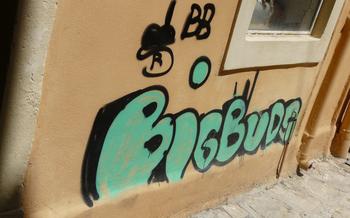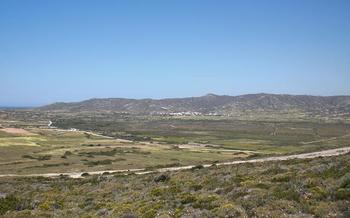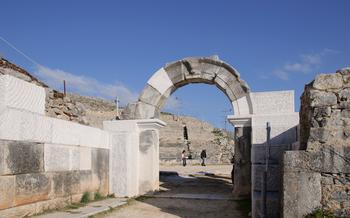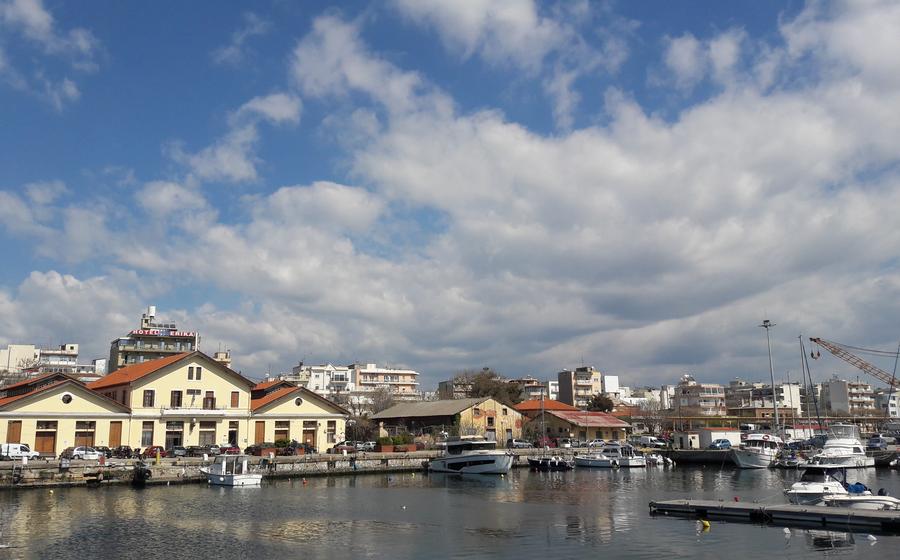
Thrakika Ekkokistiria – Silk Factory in Soufli
- The Thrakika Ekkokistiria - Silk Factory in Soufli
- A Brief History of the Factory
- The Silk Production Process
- The Factory's Contribution to the Local Economy
- A Journey Through Time
- The Factory's Unique Architecture
- Exploring the Factory's Machinery and Equipment
- Uncovering the Stories of the Silk Workers
- Preserving the Factory's Heritage
- The Art of Silk Making
- Soufli - The Silk City
- A Visit to the Factory
- Sustainable Tourism and the Factory
- The Thrakika Ekkokistiria in Literature and Art
- The Factory as a Catalyst for Innovation
- Challenges and Opportunities:
- Hands-On Experience
- The Factory's Contribution to the Local Community
- Silkworms and the Silk Road
- Environmental Impact of Silk Production
- Silk in Fashion and Beyond
- Insider Tip:
The Thrakika Ekkokistiria - Silk Factory in Soufli
A Brief History of the Factory
In the heart of Soufli, a picturesque town in northeastern Greece, lies the Thrakika Ekkokistiria, a historic silk factory that has played a significant role in the region's cultural and economic development. Founded in 1922 by a group of enterprising businessmen, the factory quickly became a hub for silk production, employing hundreds of skilled workers and contributing to the town's reputation as "the Silk City."
The factory's establishment coincided with a period of rapid growth and modernization in Greece, and the silk industry was seen as a symbol of progress and innovation. The factory's founders were determined to create a state-of-the-art facility that would rival the best silk factories in Europe, and they spared no expense in acquiring the latest machinery and equipment.
The Silk Production Process
The silk production process at the Thrakika Ekkokistiria was a complex and time-consuming one, requiring meticulous attention to detail and a deep understanding of the unique properties of silk. The factory employed skilled workers who specialized in each stage of the process, from the cultivation of silkworms to the weaving of the finished fabric.
The first step was to collect the silkworm cocoons, which were carefully sorted and inspected to ensure their quality. The cocoons were then placed in a warm, humid environment to soften the silk fibers, making them easier to unwind. The unwinding process, known as reeling, was carried out by hand, using a special machine that separated the long, continuous silk filaments from the cocoon.
The Factory's Contribution to the Local Economy
The Thrakika Ekkokistiria played a significant role in the economic development of Soufli and the surrounding region. At its peak, the factory employed over 400 workers, providing a steady source of income for families in the area. The factory also supported a network of local businesses, including silkworm farmers, dyers, and weavers, who supplied the factory with raw materials and services.
The factory's success was not only due to its high-quality silk products but also to its commitment to innovation and technological advancement. The factory's owners were constantly investing in new machinery and equipment, which allowed them to improve the efficiency and quality of their production processes. This commitment to innovation helped the factory to remain competitive in the global silk market and to maintain its position as a leader in the Greek silk industry.
A Journey Through Time
The Thrakika Ekkokistiria is not just a factory; it's a living museum that takes visitors on a journey through time. The factory's unique architecture, machinery, and equipment tell the story of a bygone era when silk production was a vital part of the local economy.
The Factory's Unique Architecture
Built in the early 20th century, the factory's architecture is a blend of traditional and industrial styles. The imposing brick facade and tall chimneys are reminiscent of factories from the Industrial Revolution, while the intricate ironwork and decorative elements add a touch of elegance.
Exploring the Factory's Machinery and Equipment
Inside the factory, visitors can explore the machinery and equipment that have been used for over a century to produce silk. The looms, reeling machines, and other contraptions are a testament to the ingenuity and craftsmanship of the factory's founders.
Uncovering the Stories of the Silk Workers
The factory's walls hold the stories of generations of silk workers who dedicated their lives to producing the finest silk. Visitors can learn about the working conditions, the challenges they faced, and the pride they took in their craft.
Preserving the Factory's Heritage
The Thrakika Ekkokistiria is a valuable part of Greece's industrial heritage. The factory's preservation ensures that future generations can learn about the history of silk production in Soufli and appreciate the craftsmanship of the people who worked here.
The Art of Silk Making
The city of Soufli has a long and rich history of silk production, dating back to the 16th century. The Thrakika Ekkokistiria - Silk Factory played a crucial role in this tradition, employing skilled artisans and producing high-quality silk fabrics.
Silk holds a significant place in Greek culture and is prized for its beauty, durability, and luxurious feel. The factory in Soufli produced various types of silk, including mulberry silk, tussah silk, and wild silk. Each type has unique characteristics, and the factory's artisans were skilled in working with all of them.
The traditional silk weaving techniques employed at the factory have been passed down from generation to generation. The process begins with the unwinding of silk cocoons, followed by twisting the fibers into yarn. The yarn is then dyed using natural dyes extracted from plants and minerals, creating a vibrant array of colors. The dyed yarn is then woven into intricate patterns using traditional looms.
The use of natural dyes is a testament to the factory's commitment to sustainability and preserving traditional methods. These dyes not only create beautiful colors but are also environmentally friendly and safe for the skin.
The silk-making process is a delicate and time-consuming one, requiring skill, patience, and attention to detail. The artisans at the Thrakika Ekkokistiria - Silk Factory were masters of their craft, producing exquisite silk fabrics that were renowned throughout Greece and beyond.
Soufli - The Silk City
The city of Soufli is inextricably linked to silk production, earning it the moniker "The Silk City." Since the 19th century, Soufli has been renowned for its exquisite silk, which has gained international acclaim. The city's rich silk-making heritage is evident in its architecture, culture, and traditions.
The Silk Museum of Soufli
To delve deeper into the city's silk legacy, visitors can explore the Silk Museum of Soufli. This captivating museum houses a collection of artifacts, machinery, and historical documents that narrate the story of silk production in the region. Visitors can learn about the different stages of silk making, from the cultivation of mulberry trees to the weaving of delicate fabrics.
The Annual Silk Festival
Each year, Soufli celebrates its silk heritage with a vibrant Silk Festival. This lively event showcases the city's silk-making traditions through exhibitions, demonstrations, and workshops. Visitors can witness the entire silk-making process, from the spinning of cocoons to the creation of intricate silk garments. The festival also features traditional music, dance performances, and local delicacies, offering a truly immersive cultural experience.
Other Silk-Related Attractions in Soufli
Beyond the Silk Museum and the annual festival, Soufli boasts several other attractions that showcase its silk-making heritage. Visitors can wander through the historic center of the city, admiring the well-preserved neoclassical buildings that once housed silk workshops. The city is also home to numerous silk shops, where visitors can purchase a variety of silk products, from luxurious scarves and shawls to elegant clothing and home décor items.
A Visit to the Factory
The Thrakika Ekkokistiria factory warmly welcomes visitors with a variety of guided tours and workshops that provide an immersive and educational experience. Led by knowledgeable guides, these tours take visitors on a journey through the history, process, and cultural significance of silk production. Visitors can witness the intricate machinery in action, learn about the different stages of silk making, and uncover the stories of the skilled workers who have dedicated their lives to this craft.
The factory also boasts a visitor center that serves as a hub for information, exhibitions, and interactive displays. Here, visitors can delve deeper into the world of silk, explore the factory's rich history, and admire a showcase of exquisite silk products. The center also provides a platform for local artisans and craftspeople to display and sell their unique silk creations, offering visitors a chance to take home a piece of Soufli's silk heritage.
For those who wish to engage in a hands-on experience, the factory offers workshops that allow visitors to learn the art of silk making firsthand. Under the guidance of experienced instructors, participants can try their hand at traditional silk weaving techniques, create their own silk scarves or accessories, and discover the satisfaction of crafting a unique souvenir to cherish. These workshops provide a fun and interactive way to connect with the local culture and create lasting memories of a visit to the Thrakika Ekkokistiria factory.
Sustainable Tourism and the Factory
The Thrakika Ekkokistiria embraces sustainable tourism practices to minimize its environmental impact and promote responsible travel. The factory's commitment to sustainability aligns with global efforts to preserve cultural heritage while protecting the environment.
The factory's sustainable initiatives include reducing energy consumption through the use of energy-efficient lighting and machinery. It also incorporates recycling and waste management practices to minimize its carbon footprint. Additionally, the factory collaborates with local communities to promote responsible tourism and support local businesses.
Visitors to the factory are encouraged to adopt sustainable practices during their visit. Guided tours emphasize the importance of responsible tourism, and visitors are encouraged to respect the factory's environment and support local businesses. The factory's visitor center provides information on sustainable tourism practices and local initiatives.
The Thrakika Ekkokistiria serves as a model for sustainable tourism in the region. By promoting responsible travel and minimizing its environmental impact, the factory contributes to the preservation of cultural heritage and the well-being of local communities.
The Thrakika Ekkokistiria in Literature and Art
The Thrakika Ekkokistiria has been immortalized in various works of Greek literature and art. Renowned Greek writer Alexandros Papadiamantis, whose works often revolve around the simple lives of ordinary people, wrote about the silk factory and its workers in his short story "The Silk Girl." The factory's unique atmosphere and the stories of its workers have also captured the attention of visual artists. Paintings and sculptures depicting the factory and its machinery can be found in galleries and museums across Greece, paying homage to the factory's rich history and cultural significance.
The Thrakika Ekkokistiria has played a crucial role in preserving the cultural heritage of Soufli and the surrounding region. It stands as a testament to the ingenuity and craftsmanship of the local people and serves as a reminder of the important role that silk production has played in the development of the city. The factory's enduring legacy is a source of pride for the community and a reminder of the importance of preserving and celebrating traditional industries and skills.
The Factory as a Catalyst for Innovation
The Thrakika Ekkokistiria has played a significant role in driving technological advancements in the silk industry. It has embraced innovative techniques to improve efficiency, quality, and sustainability. The factory collaborates with universities and research institutions to explore new methods and materials. By investing in research and development, the factory ensures that it remains at the forefront of silk production.
The factory's commitment to innovation is evident in its use of cutting-edge machinery and equipment. It has incorporated advanced technologies to automate various stages of the production process, resulting in increased productivity and accuracy. Additionally, the factory employs eco-friendly practices to minimize its environmental impact. It utilizes energy-efficient lighting, recycles water, and implements waste reduction initiatives.
The factory's innovative spirit extends beyond its production processes. It actively participates in trade shows, conferences, and workshops to share its expertise and learn from others in the industry. This exchange of knowledge and ideas fosters collaboration and promotes the advancement of the silk sector as a whole.
The factory's dedication to innovation has earned it recognition and awards. It has been featured in numerous publications and documentaries, showcasing its unique approach to silk production. The factory's commitment to sustainability and technological advancements has positioned it as a leader in the industry, setting an example for others to follow.
Challenges and Opportunities:
The globalized world has brought both challenges and opportunities for the Thrakika Ekkokistiria. On the one hand, the factory has had to contend with increased competition from cheaper silk producers in Asia. This has forced the factory to adapt and find ways to differentiate its products and maintain its competitiveness.
On the other hand, globalization has also opened up new markets for Soufli silk. With the rise of e-commerce and the growing demand for high-quality, sustainable products, the factory has been able to reach a wider customer base around the world. Additionally, the factory has collaborated with fashion designers and retailers to create unique and exclusive silk products that appeal to a global audience.
The factory is also exploring ways to incorporate innovative technologies and techniques into its production process. This includes using digital design tools to create intricate patterns and experimenting with new natural dyes. By embracing innovation, the factory aims to stay at the forefront of the silk industry and continue to produce high-quality, sustainable silk products that meet the demands of modern consumers.
By addressing the challenges and seizing the opportunities presented by globalization, the Thrakika Ekkokistiria is well-positioned to continue its legacy as a leading producer of silk in Greece and beyond.
Hands-On Experience
The Thrakika Ekkokistiria offers visitors the unique opportunity to delve into the art of silk making through hands-on experiences and workshops. These workshops are suitable for individuals of all ages, providing an immersive and interactive way to learn about the intricate process of silk production. Skilled artisans guide participants through the steps of creating their own silk products, using traditional techniques and materials.
During these workshops, visitors can learn how to extract silk from cocoons, spin it into thread, and weave it into beautiful fabrics. They can experiment with different colors and patterns, creating one-of-a-kind scarves, shawls, or other silk items. The workshops provide a hands-on understanding of the skill and artistry involved in silk making, allowing visitors to take home a personalized souvenir that they have created themselves.
The Thrakika Ekkokistiria's workshops also contribute to the preservation of traditional silk-making techniques, ensuring that this valuable cultural heritage is passed down to future generations. By participating in these workshops, visitors not only gain an appreciation for the art of silk making but also contribute to the sustainability of this ancient craft.
The Factory's Contribution to the Local Community
The Thrakika Ekkokistiria has played a vital role in shaping the socio-economic landscape of Soufli. Throughout its history, the factory has provided employment opportunities for local residents, offering them stable incomes and a sense of purpose. This has contributed to the overall prosperity and well-being of the community.
Moreover, the factory has supported local artisans and craftspeople who specialize in silk-related products. These artisans create and sell unique items such as scarves, shawls, bags, and clothing, using traditional techniques passed down through generations. Their work not only preserves these traditional skills but also generates additional income for the local economy.
By preserving traditional skills and knowledge associated with silk production, the factory contributes to the cultural heritage of Soufli. This helps to maintain a sense of identity and pride among the local population and attracts visitors interested in learning about the rich history of silk making in the region.
In addition to its direct economic impact, the factory has indirectly boosted the local economy and tourism. The presence of a unique and historically significant attraction like the Thrakika Ekkokistiria has drawn visitors from around the world, generating revenue for local businesses such as hotels, restaurants, and shops. This influx of tourism has also created opportunities for entrepreneurs to establish new businesses and services catering to the needs of visitors, further contributing to the economic growth of the region.
Silkworms and the Silk Road
The Silk Road was an ancient network of trade routes that connected the East and the West, stretching from China to the Mediterranean Sea. Silk was one of the most important commodities traded along this route, and it played a crucial role in the cultural and economic development of many civilizations.
Silkworms are the insects that produce silk. They are native to China, and their cultivation and the production of silk from their cocoons has been a major industry in the country for centuries. The silkworms feed on mulberry leaves, and they spin cocoons around themselves as they prepare to transform into moths. These cocoons are then harvested and processed to extract the silk fibers.
The lifecycle of a silkworm is relatively short. They hatch from eggs as larvae, and they spend the majority of their time eating mulberry leaves. After about a month, they spin their cocoons and transform into pupae. After another two weeks, they emerge from their cocoons as adult moths. The female moths lay eggs, and the cycle begins again.
Sericulture is the practice of raising silkworms for the production of silk. It is a complex and labor-intensive process, but it is also a very rewarding one. Silk is a beautiful and versatile fabric that is used in a wide variety of applications, from clothing to home décor.
Environmental Impact of Silk Production
The Thrakika Ekkokistiria is committed to minimizing its environmental footprint and promoting sustainable practices throughout its operations. Silk production has a relatively low environmental impact compared to other fabrics, as it requires less water, land, and chemicals. The factory uses natural dyes and biodegradable materials whenever possible, and it recycles and composts waste products. Additionally, the factory is exploring ways to reduce its energy consumption and use renewable energy sources.
The factory's commitment to sustainability extends beyond its own operations. It works closely with local farmers to promote sustainable sericulture practices, such as using organic mulberry leaves to feed the silkworms and reducing the use of pesticides. The factory also supports local artisans and craftspeople who use traditional techniques to create unique silk products.
By embracing sustainability, the Thrakika Ekkokistiria is helping to preserve the environment and support the local community. Visitors to the factory can learn about sustainable silk production practices and see firsthand how the factory is working to reduce its environmental impact.
Silk in Fashion and Beyond
The Thrakika Ekkokistiria's silk has been used in haute couture and ready-to-wear fashion for centuries. Renowned designers such as Coco Chanel, Christian Dior, and Yves Saint Laurent have incorporated Soufli silk into their iconic creations. In recent years, there has been a resurgence of interest in natural fibers and sustainability in the fashion industry, leading to a renewed appreciation for silk.
Beyond fashion, Soufli silk has also found its way into home decor and accessories. Its luxurious texture and vibrant colors make it a popular choice for curtains, cushions, rugs, and scarves. Silk's natural breathability and hypoallergenic properties also make it ideal for bedding and other home textiles.
The versatility of silk extends to various industries, including cosmetics, pharmaceuticals, and even aerospace. Its strength, elasticity, and biocompatibility make it suitable for a wide range of applications, from parachutes and bulletproof vests to sutures and surgical implants.
Insider Tip:
To make the most of your visit to the Thrakika Ekkokistiria, plan your trip during the summer months, when the weather is at its best and the factory is bustling with activity. Combine your visit with a stroll through the charming town of Soufli, exploring its silk shops, boutiques, and historical landmarks. Indulge in a delicious meal at one of the local restaurants that offer silk-inspired dishes, such as silk-wrapped dolmades or silk-infused baklava. As a unique souvenir, consider purchasing a hand-woven silk scarf, a delicate silk jewelry piece, or a luxurious silk home decor item directly from the factory's shop. Embracing the local culture and supporting the artisans who keep this ancient craft alive will make your experience in Soufli truly unforgettable.
